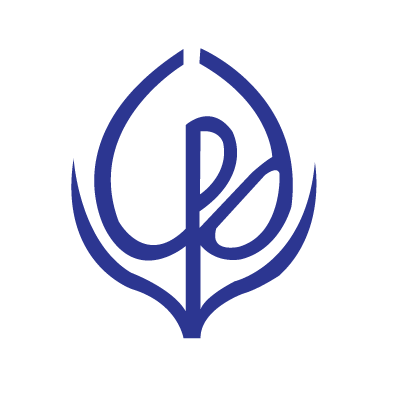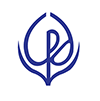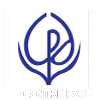Originally posted in The Daily Star on 23 April 2025
Challenges in building a reformed political order
This is the first part of a two-part analysis.

The pathway to the July-August uprising culminated in Sheikh Hasina’s (SH) extraordinary response to the mass mobilisation led by the students against her regime. She committed the politically and morally unforgivable act of ordering the law enforcers to gun down protesting students and ordinary citizens, including children. Fortunately, in contrast to the police, Rab, and border guards, the army declined to comply with this order; otherwise, a bloodbath might have ensued.
The refusal of the army to comply with SH’s order to use its full force to shoot on the people was the game changer which ended in her exit from Gono Bhaban at 45 minutes’ notice on August 5, 2024. This is not the first time that the refusal of the army to fire on protesters has culminated in regime change. It happened during Ershad’s downfall in 1990 when the then Chief of Army Staff (CoAS) Nuruddin refused to deploy the army to back his C-in-C. In January 2007, CoAS M U Ahmed ushered in the army-backed caretaker regime of Fakhruddin Ahmed by refusing to deploy the army to protect President Iajuddin Ahmed’s BNP-biased caretaker regime. M U Ahmed had also been handpicked by Khaleda and was a batchmate of her brother, Major Sayeed Eskander. It would appear that the Bangladesh Army has its own institutional interests which transcend personal loyalties. Historically, it has tended to draw the line when ordered to use force to protect an unpopular regime. I do not know how far this precedent applies in other Third World countries.
We never got a chance to reform our state and politics like now. Let’s not waste it
As it was, around 1,400 people, mostly young, were killed by the firing of security forces under SH’s directive, according to the UN. The events of July-August 2024 have been investigated by the Office of the United Nations High Commissioner of Human Rights (OHCHR) at the request of Prof Muhammad Yunus. The UN has produced a 500-plus-page, well-documented report which will serve as the most reliable intelligence we are likely to receive on the events of July and August. The report has been formally presented by the OHCHR at their recent annual conclave in Geneva. It will also be used as a testimony in the forthcoming trial of SH and her colleagues in Dhaka for ordering the killing of citizens. However, involving the OHCHR may impose certain constraints on the trial process in Bangladesh to ensure international norms of due process, transparency, and exposure to outside scrutiny.
The erosion in the credibility of the SH regime did not begin in July 2024. Human rights abuses through the indiscriminate arrest of opponents, disappearing citizens, use of torture, and suppression of the media have also blackened the 16-year record of the SH regime. Reports from the various reform commissions set up by Yunus spell out the malgovernance which underlay the management of the administration and economy. Notwithstanding many positive outcomes for the economy, various maledictions within the system have been identified in the White Paper prepared by a task force that exposes the darkness beneath the surface. The extent of the malfeasance appears mind-boggling and has had serious consequences for the economy, particularly in the banking sector. Retaining power through three synthetic elections further delegitimised SH in the eyes of her fellow citizens.
Distorted vision from across the border
The killings and the unbridled nature of the corruption practised by SH’s crony capitalists has generated a level of anger against her and her party which has itself become a political variable to be taken into account in any assessment of our situation. The killings, electoral fraud, systemic violation of human rights, and industrial-scale corruption associated with the SH regime appear to have been completely ignored by the Government of India (GOI). The ruling party trolls in India continue to trash the Yunus regime in the media, propagating a totally tendentious narrative of the downfall of SH. Fortunately, not all Indian commentators buy in to this false narrative. However, even reasoned well-wishers of Bangladesh from India say little, if anything, about this dark background to the uprising and its aftermath. Until they take adequate cognisance of these events, however well-meaning their comments on current events may be, the story will remain incomplete and underexplained, which erodes their credibility in the eyes of Bangladeshis and sharpens antagonism towards India within Bangladesh.
The continuing reluctance of the GOI to engage in any substantive discussion at the governmental level, and the initial disinclination of Prime Minister Narendra Modi to even open a conversation with Dr Yunus, further aggravated the climate of Indo-Bangladesh relations, which were already contaminated by the presence of SH in India. The reluctance of the Indian High Commission in Dhaka to restore normalcy to the issue of visas to large numbers of applicants has also created much disquiet and reflects a negative position of the Ministry of External Affairs (MEA), which is inimical to both our interests. Bangladesh is possibly the largest source of tourists in India today, and their absence from Kolkata is contributing to a local business recession.
In the course of an interview with BBC, Prof Yunus provided an extended commentary on the importance of strong and balanced Indo-Bangladesh relations. This quest for strengthening relations with India was finally advanced through the long-delayed meeting between PM Narendra Modi and CA Yunus, held recently at the BIMSTEC Summit in Bangkok, where mutual concerns were discussed. At the meeting, Yunus presented Modi with a photograph dating back to 2015, picturing Modi presenting him with a special award, indicating the high esteem in which Yunus was held across India. The Bangkok encounter may have concluded with parallel narratives emerging from either side, but it did signal that more regular and meaningful dialogues can be resumed. The recent decision by the Indian government to suspend transit traffic for Bangladesh’s export cargoes through Indian airports, without any prior notice, was a rather unpromising signal for the improvement of relations.
Rewriting the historical narrative
Having contextualised the situation as seen from Dhaka, the evolving political situation here is far from settled or predictable. The nature and denouément of the SH regime has opened up Pandora’s box and let the demons of discord once again fly out. The Jamaat-e-Islami (JI) has emerged as a regenerated and more politically relevant force. While they project sobriety in their discourse, one of JI’s main tasks is to rewrite the historical narrative to project themselves as victims, if not heroes, of 1971, where Bangladesh engaged in the wrong war under the leadership of Bangabandhu against the wrong enemy. JI’s narrative is being internalised by some elements of the student leadership who led the uprising, now reconstituted as a political party, hence their demand for repudiating the 1972 constitution. This distorted vision of the political landscape has culminated in the destruction of Bangabandhu’s residence on Road 32 and further such acts of a political orientation. The government has belatedly disowned such acts of vandalism. Yunus urged that such attacks be discontinued, but this came too late and with insufficient forcefulness to hold back those forces who aspire to rewrite our history.
The impunity thus far enjoyed by mobs assembled to attack Awami League (AL) members and even their presumed fellow travellers has provided licence to a wider community of hoodlums interested in plunder, who can invade anyone’s household by denouncing them as collaborators of the ancién regime. This impotence of the government against mob violence has further empowered a class of so-called moral policemen, who believe the new order is more congenial to their intolerant anti-pluralistic beliefs. Such groups seek to impose their values not just on women but other vulnerable communities.
It has been argued by some commentators both from Bangladesh and abroad that the as yet unsettled politico-culture wars of 1947 vs 1971 remain ongoing, though there have been substantive contextual changes in the regional landscape. This debate, inspired by those who were not just uncomfortable with the leadership of the Liberation War but were hostile to the very emergence of Bangladesh, has not been openly addressed and has, therefore, never been brought to resolution. As an issue, it has little practical relevance to the immediate need for addressing the myriad problems facing the people of Bangladesh. But it does have relevance as to how we define our intra-regional relations, particularly in relation to Pakistan and India.
Revisiting 1971 has brought to the surface political elements which harboured public hostility towards India. This anti-India mood is amplified by what is perceived as the one-eyed perspective in India towards post-Hasina Bangladesh. This perception towards India is also fuelled, quite deliberately, by social media influencers, some operating from outside Bangladesh, who have encouraged their myriad Facebook followers to physically attack particular media establishments for what is quite unjustly projected as their pro-Indian positions.
The fightback against this anti-1971-driven narrative continues on TV talk shows, in the print media, and even on some public platforms. But the so-called liberal/secular constituency remains inhibited about speaking out too loudly, as indeed was the case during the AL regime. The apprehensions of this liberal constituency today are driven by fears of exposure to social media slander and the hazard of mob violence.
The apparent hostility emanating from India towards the Yunus regime, particularly on social media and from a group of ex-diplomats, has encouraged a move within Bangladesh, both at the official and civil society levels, to improve relations with Pakistan. The post-1975 regimes in Bangladesh had tended to move closer to Pakistan, ostensibly to provide some counterweight to what had been perceived as the hegemonic presence of India in Bangladesh. In those days, Pakistan commanded a stronger strategic presence within the South Asian region due to the backing of both the US and China vis-a-vis India.
In the course of the 21st century, such ancient political equations have changed. In the present circumstances, it makes little sense for some political forces in Bangladesh to romanticise the Pakistan connection as a counterweight to India. Over the last two decades, the balance of power between India and Pakistan has been totally transformed. India is now a global power with the third largest economy (in purchasing power parity terms). The Indo-US relations are at their strongest point, while China is India’s second largest trading partner. In the present circumstances, in contrast, Pakistan’s economy is on life support. Its governance is unstable due to the ongoing move by the ruling coalition and their military backers to frustrate the democratic mandate of the people for the party of Imran Khan, who remains in detention. Under such circumstances, Pakistan demonstrates little capacity to project its political influence beyond its borders, except to neighbouring Afghanistan, where their efforts have been largely ineffective. Bangladesh is today significantly ahead of Pakistan in terms of economic and human development indicators. Whether strategically or economically, Pakistan can do little for us in the prevailing regional dialectic.
Our relations with India and Pakistan do not need to be interlinked but kept bilateral and autonomous. The SH regime’s relations with Pakistan were not unrelated to her relations with India, so she kept Pakistan at arm’s length. Under the new order, Bangladesh can forge a mutually beneficial relationship with Pakistan through greater economic interactions and people-to-people contact. India also needs to recognise that improved Bangladesh-Pakistan relations are not designed as a provocation towards India. What needs to be avoided and treated as a red line drawn by India is the restoration of transit opportunities across Bangladesh for Pakistan agencies to resume their support for cross-border insurgencies in our neighbouring country.
Prof Rehman Sobhan, one of Bangladesh’s most distinguished economists and a celebrated public intellectual, is founder and chairman of the Centre for Policy Dialogue (CPD).
Views expressed in this article are the author’s own.



